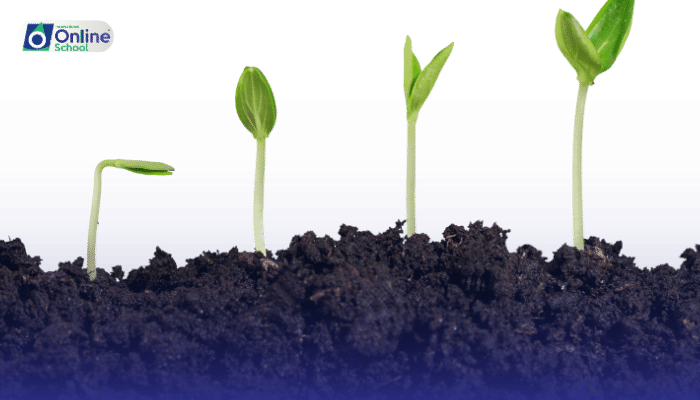
Learning Outcomes:
i. Define plant growth and explain its significance for plant development and survival.
ii. Differentiate between primary growth and secondary growth in plants.
iii. Describe the cellular and tissue processes involved in primary growth, including cell division and elongation.
iv. Explain the role of apical meristems in primary growth and the formation of roots, stems, and leaves.
v. Discuss the process of secondary growth, focusing on the role of lateral meristems in increasing the girth of stems and roots.
vi. Analyze the factors that influence plant growth, including environmental conditions, nutrients, and hormones.
i. The Dynamic Nature of Plants: Understanding Growth
Plant growth is an essential process that allows plants to increase in size, complexity, and structure. It involves cell division, cell enlargement, and differentiation, resulting in the formation of new tissues and organs. Plant growth is continuous throughout the plant's life cycle, enabling it to adapt to changing environmental conditions, compete for resources, and reproduce.
ii. Primary Growth: Lengthening and Expanding
Primary growth is the increase in the length of roots and stems, primarily driven by cell division and elongation in apical meristems. Apical meristems are specialized regions of actively dividing cells located at the tips of roots and shoots.
Root apical meristem: The root apical meristem is responsible for the elongation of the root system, enabling the plant to anchor itself in the soil, absorb water and nutrients, and explore new areas for resource acquisition.
Shoot apical meristem: The shoot apical meristem is responsible for the elongation of the stem and the formation of leaves, flowers, and other organs. The continuous division of cells in the shoot apical meristem leads to the upward growth of the plant and the development of complex branching patterns.
iii. Secondary Growth: Widening and Strengthening
Secondary growth, also known as radial growth, is the increase in the girth or diameter of stems and roots, primarily driven by cell division and differentiation in lateral meristems. Lateral meristems are specialized regions of actively dividing cells located parallel to the longitudinal axis of the plant.
Vascular cambium: The vascular cambium is responsible for the formation of secondary xylem and secondary phloem. Secondary xylem, also known as wood, provides additional support and contributes to the transport of water and minerals. Secondary phloem, also known as bast, transports nutrients and organic compounds throughout the plant.
Cork cambium: The cork cambium is responsible for the formation of cork, a protective layer that replaces the epidermis as the stem or root grows in diameter. Cork cells are dead cells with suberized cell walls, providing protection against water loss, mechanical damage, and environmental stresses.
iv. Factors Influencing Plant Growth
Plant growth is influenced by a complex interplay of internal and external factors:
Internal factors: These include genetic predisposition, hormones, and plant metabolism. Hormones, such as auxins, gibberellins, and cytokinins, play a crucial role in regulating cell division, elongation, and differentiation.
External factors: These include environmental conditions, such as light, temperature, water availability, and nutrient availability. Optimal growth conditions vary among plant species, but adequate light, water, and nutrients are essential for most plants to thrive.
Plant growth, encompassing both primary and secondary growth, is a dynamic process that allows plants to adapt to their environment, compete for resources, and reproduce. Understanding the cellular and tissue processes involved in plant growth, as well as the factors that influence it, provides valuable insights into plant physiology, ecology, and agriculture.